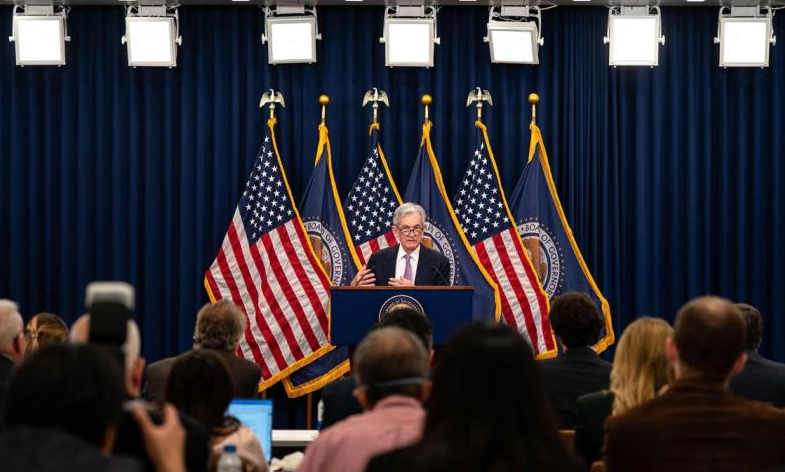
“America First” by Trump doesn’t mean isolating the United States from the world, rather it aims to assert a more assertive stance to lead the global order and revive the vision of “making America great again.” While it shows a strong inclination towards unilateralism, it does not signify a revival of isolationism. Instead, it seeks to shape an international order that aligns with American interests through stronger global leadership.
With the dust settling from the U.S. election, Trump’s unexpected victory has sent shockwaves globally. An article in The Economist on November 7th expressed concerns about the U.S. “abandoning” its allies, suggesting a return to isolationism with Trump’s “America First” policy, potentially causing global order to become unsettled.
However, what does “America First” entail? According to the America First Policy Institute (AFPI), the policy aims to “prioritize the interests of the American people,” covering freedom, free enterprise, national strength, military superiority, and foreign policy that serves American interests. The specific policy focuses on seven aspects: sovereignty, strong economy, strong military, effective diplomacy, reliable alliances, avoiding endless wars, and containing China.
Among these seven key points, apart from “sovereignty” and “avoiding endless wars,” there is little sign of isolationism. In fact, “America First” centers on strengthening national power and does not distance the U.S. from the world. It emphasizes global leadership in economic and diplomatic realms, with adjustments in approach.
Firstly, “America First” does not oppose globalization but seeks to address the structural issues it has brought to the U.S. While neoliberal globalization has brought significant benefits to the U.S., it has also led to issues like deindustrialization, marginalization of the working class, and the decline of the military-industrial complex. Hence, the U.S. aims to rebuild a robust industrial base through tariff protection and trade balance, restoring overwhelming military-industrial superiority akin to the eras of Roosevelt, Truman, and Reagan. This policy is closely linked to U.S. national security. After WWII, U.S. security relied on the stability of the global economic system, not on self-sufficiency.
Shifting towards economic nationalism, the “America First” policy opposes the one-sided pursuit of profit maximization under neoliberalism. It advocates for “reciprocal trade” over “free trade” and aims to achieve “balanced trade” through tariff barriers. While this “Fortress America” approach carries some isolationist undertones, it compels trading partners to open their markets through mandatory “market access balance,” indicating it is not isolationist.
Since 2017, the U.S. has jointly proposed “trilateral reform recommendations” with the EU and Japan on amending WTO rules, condemning “market-distorting measures” of “state capitalism.” This proposal aims to rebuild a more liberalized form of globalization that excludes China, consolidating the existing U.S.-led international economic order. This “re-globalization” process serves both “America First” and aligns with the Cold War trend of strategic decoupling from China. Meanwhile, market openness has also been strengthened among the U.S., EU, and Japan, aiming for “zero tariffs, zero barriers, zero subsidies” to promote reciprocal trade. Thus, “America First” does not seek to retreat from globalization but aims to prevent its erosion on the U.S. real economy to reap its benefits.
Furthermore, in military and foreign affairs, “America First” advocates for cautious military deployment to avoid getting entangled in endless wars. However, it is willing to resort to force to protect core U.S. interests. Hence, “America First” calls for a significant expansion of military capabilities, increasing defense spending from less than 3% of GDP to 6% as seen during the Cold War peak. In comparison, before WWII in the peak of isolationism in 1940, the U.S. military had a total force of less than 200,000, ranking 17th to 19th worldwide, with defense spending accounting for only 1.7%.
Clearly, the substantial military investment is not solely for domestic defense but to maintain U.S. global leadership. Therefore, military reorganization is a top priority under “America First” – with a focus on strengthening the Navy and nuclear deterrence, strategically aiming to contain China. This implies the U.S. will scale back in other strategic directions, requiring allies to shoulder more responsibilities.
Different from isolationism, Trump’s “America First” advocates for building a robust alliance system: in Europe, by encouraging “NATO Europeanization” to have allies take on defense against Russia to focus on countering China; in the Indo-Pacific region, by promoting Japan and South Korea to expand military capabilities to jointly contain China.
“America First” promotes peace through strength, uniting allies but not being constrained by them. While this unilateral tendency may weaken alliance cohesion, it also drives strategic reorganization in Europe. French President Macron’s attempts to guide Europe into a “wartime regime” through the Ukraine war, aiming to revitalize Europe, are further supported by “America First.” The military expansion of Japan and South Korea can be seen as similar examples.
It must be noted that behind “America First” lies a cold realist logic – to swiftly resolve the Russia-Ukraine conflict through a balance of power strategy, rather than seeking unconditional surrender from Russia. The ultimate goal of this strategy, as indicated by “NATO Europeanization,” is to stabilize Europe quickly to focus resources on countering the greatest strategic threat – China. For this purpose, the possibility of the U.S. implementing the “reverse-Nixon strategy” (as advocated by Kissinger for “containing China while engaging Russia”) cannot be ruled out.
The strategic cooperation between Europe and the United States has become increasingly apparent. Under this dominant strategic framework, Europe, which lacks sufficient military preparedness, shows a willingness to actively cooperate. Due to the need to defend the liberal international order that underpins Western dominance, the pursuit of multipolarity has taken a backseat. After all, Europe has enjoyed long-standing peace, with slow institutional changes making it difficult to achieve genuine strategic autonomy in the short term. In fact, the strategic cooperation between Europe and the United States is already very evident, with multiple European countries voluntarily deploying troops to the Far East, joining in the containment of China, in return for U.S. security guarantees—this unprecedented move. Regardless of the outcome of the conflict in Ukraine, the remilitarization of Europe will be a natural result of NATO Europeanization driven by the “America First” policy. The comprehensive military mobilization triggered by “America First” in the Western world is undoubtedly a nightmare for “revisionist countries” like China and Russia.
Another important aspect of the rich connotation of “America First” is its aim to establish the United States as an energy superpower, providing sufficient energy security for its own country, allies, and energy-poor countries in the South, further consolidating its leadership position. This strategy is reminiscent of Roosevelt’s efforts during World War II to transform the United States into a “democratic arsenal.” It was during that time that the U.S. began to abandon isolationism and move towards becoming a global leadership center.
One example that distinguishes “America First” from isolationism is its advocacy for “bold diplomacy.” The successful Middle East policy during Trump’s first term is a clear example. Upon returning to the White House, Trump is bound to further support Israel, promote stability in the Middle East, and disrupt the positioning of China and Russia in the region.
Former U.S. Trade Representative Robert Lighthizer pointed out incisively that the core of the “America First” policy lies in mutual defense and balanced trade. Both aspects involve proactive measures aimed at shaping an international strategic landscape that benefits U.S. national interests. “America First” emphasizes strong leadership, even if it means challenging bureaucratic politics and combating the “deep state” to ensure the smooth implementation of its strategies. By building the strongest military and strongest economy supported by cutting-edge technology, the ultimate goal is to defeat the greatest strategic enemy—China.
In 2017, I consulted with renowned international relations scholar Professor Michael Cox about whether the U.S. would return to isolationism. Professor Cox’s response was emphatic: “You cannot lead the world being an isolationist.”
Indeed, Trump’s “America First” policy does not involve isolating the United States from the world; rather, it aims to assert a more assertive stance to lead the global order and revive the vision of “making America great again.” While the policy shows a strong inclination towards unilateralism, it does not signify a revival of isolationism. Instead, it seeks to shape an international order that aligns with American interests through stronger global leadership. The long-term sustainability and global response of this policy will be crucial in shaping future international politics.
(The author is a visiting scholar at the London School of Economics and Political Science)









